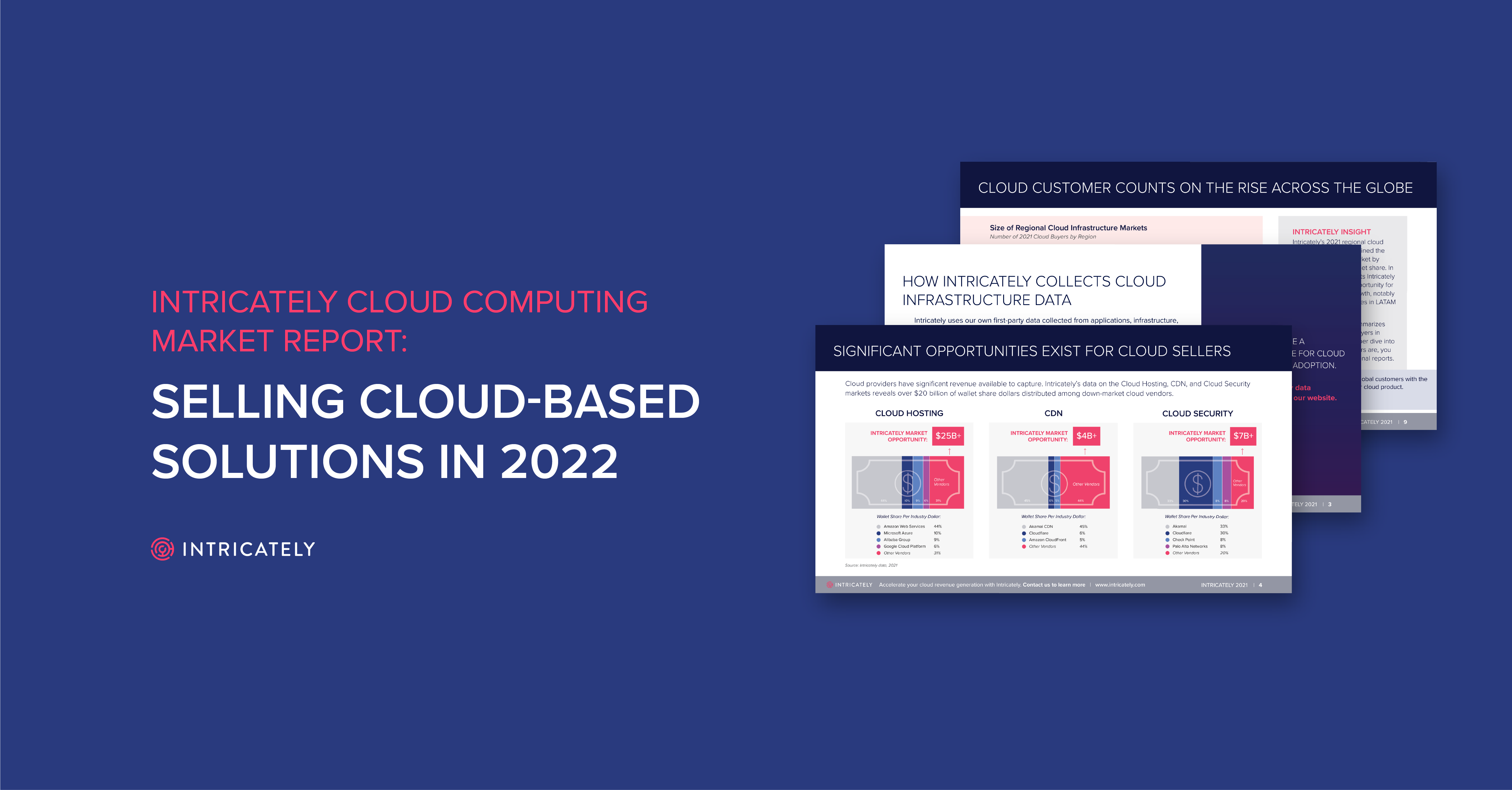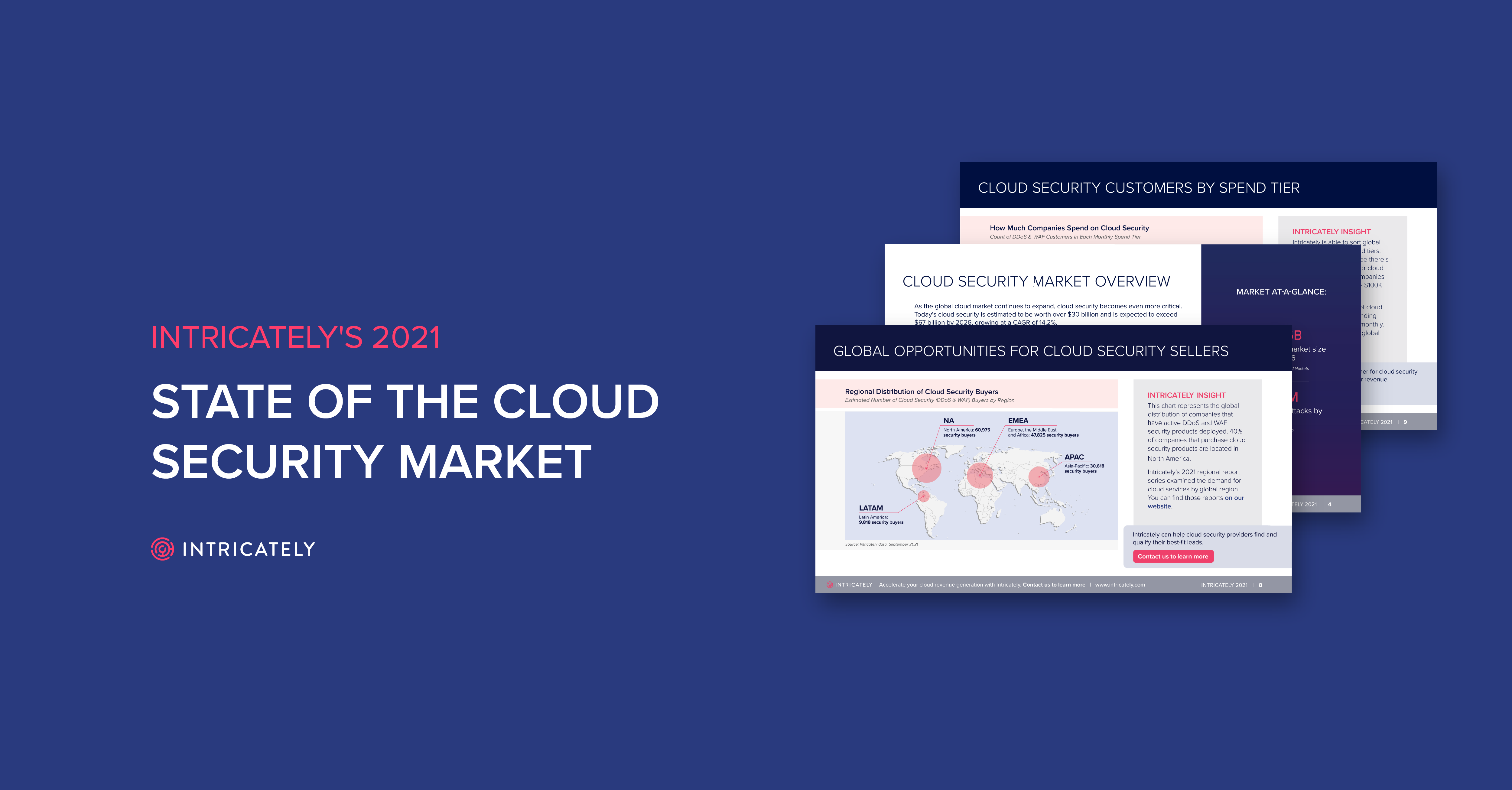
 back to all posts
back to all posts
The Role of Cloud Marketplaces in Creating and Optimizing a Cloud Go-to-Market Strategy

Insights from today's post are from Nicole Wojno Smith, VP of Marketing at Tackle. Nicole has 15 years of experience in building brands, implementing programs that align marketing and sales, and championing team and revenue growth.
She was also named one of Intricately's 75 Cloud Revenue Influencers to Follow in 2021.
If getting listed on cloud marketplaces is on your to-do list this year, you’re in good company.
A cloud marketplace is an online storefront operated by a cloud service provider – giving customers access to software applications and services that are built on, integrate with, or complement the cloud provider's offerings. More than 35% of Forbes’ Cloud 100 companies are active marketplace sellers; and, according to Tackle, 70% of sellers plan to invest more into marketplace as a go-to-market strategy in 2021.
Recently, Tackle's VP of Marketing, Nicole Wojno Smith, joined Intricately's Selling In The Cloud podcast to discuss how cloud buyers and sellers can benefit from and succeed in today's cloud marketplaces. Here are three key takeaways that demonstrate how cloud marketplaces can enhance buyers' and sellers' go-to-market strategy.
1. Unlocking co-selling opportunities
"Buyers and sellers aren’t the only ones to benefit from cloud marketplace transactions," says Wojno Smith. In fact, cloud providers have a vested interest in wrangling more and more deals. As a result, co-sell programs reward and incentivize active marketplace sellers with access to exclusive resources, tools, leads, and opportunities.
If you haven’t already, consider initiating a co-selling with your cloud providers – it's a critical step to kickstarting an abundance of opportunities. Wojno Smith agrees:
"The relationship that the company is building with the cloud provider – that's [so important]. If successful, over time, the providers will direct people to the buyers and sellers – meaning increased traction in their listings, winning funds, or co-marketing initiatives."
2. The chance to revisit pricing and packaging
It's common for sellers to reevaluate their pricing and packaging to scale revenue for Marketplace. Says Wojno Smith:
Once you're [in the marketplace], it's really about optimizing your sales strategy. There are different pricing and packaging considerations – for example, how are you going to get your buyers there? How do you talk to your buyers about purchasing via marketplace? And what are the advantages of that?
Wojno Smith suggests mirroring your direct sales process as much as possible for initial deals, expansions, and renewals. This is especially important when you’re just getting started, to keep the barrier to entry low for your sales team – but it’s also helpful to limit sprawl as you scale.
3. Preparing for growth in multiple marketplaces
One logical route for sellers seeking to scale growth and revenue is to expand their marketplace presence. Software sellers typically begin their marketplace journey on one of the big three hyperscalers: AWS, Azure, or Google Cloud. Each one has its own terminology, requirements, processes, so prioritization is essential.
Still, sellers should be careful not to bite off more than they can chew.
“We encourage companies to not start with more than one marketplace at first," says Wojno Smith. "You should start with one marketplace, and then look at where your buyers are buying software from.”
Even if you feel that you have a meaningful business relationship with all three of the major cloud marketplaces, start with one, invest in that, and then grow into the next. This allows you to fully invest the time and effort to build a great relationship (and the knowledge) with one before you’re juggling multiple at a time.
For even more actionable insights to help you work smarter as a cloud sales and marketing professional, tune in to our Selling in the Cloud podcast.
—
Intricately helps sales and marketing teams at cloud companies identify new target accounts, based on usage and spend data.
Schedule a demo with us to align your sales and marketing team with the right target accounts for your next go-to-market launch.


3 Trends Shaping the Evolving Cloud Hosting Market

4 Ways Cloud Marketing Leaders Can Get the Most From Their Budgets in 2022

How to Perform Account Segmentation and Prioritization



Intricately’s Cloud Computing Market Report: Selling Cloud-Based Solutions in 2022


Introducing Intricately's 2021 State of the Cloud Security Market Report

